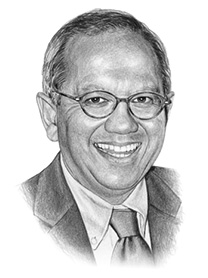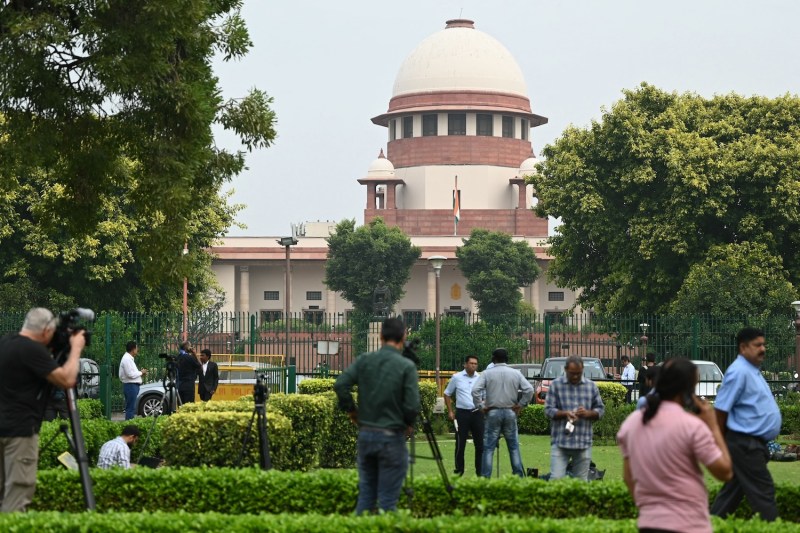Modi Still Has Great-Power Ambitions for India
A new book traces the evolution of New Delhi’s quest for elusive global status.
In 2015, shortly after assuming the office of foreign secretary, career Indian diplomat S. Jaishankar—now the minister of external affairs—gave a speech at an annual meeting of the International Institute of Strategic Studies. He said that India’s goal was to move from being a “balancing power” to a “leading power,” underscoring an objective that has long been a key tenet of India’s foreign policy: to be recognized as a significant actor in global politics.
In 2015, shortly after assuming the office of foreign secretary, career Indian diplomat S. Jaishankar—now the minister of external affairs—gave a speech at an annual meeting of the International Institute of Strategic Studies. He said that India’s goal was to move from being a “balancing power” to a “leading power,” underscoring an objective that has long been a key tenet of India’s foreign policy: to be recognized as a significant actor in global politics.
This mission began shortly after India’s independence in 1947, under the leadership of then-Prime Minister Jawaharlal Nehru, who simultaneously served as foreign minister. As early as 1949, Nehru argued that India was destined for great-power status, “not because of any ambition of hers, but because of the force of circumstances, because of geography, because of history.” In the absence of material power, Nehru enabled India to punch above its weight in international affairs by championing issues from decolonization to nuclear disarmament.
The Unfinished Quest: India’s Search for Major Power Status from Nehru to Modi, T. V. Paul, Oxford University Press, 263 pp., $29.99, May 2024.
However, Nehru’s refusal to countenance the critical role of hard power in international politics led him to neglect India’s military capabilities. This gap became evident when China launched a war against India along their Himalayan border in 1962, toward the end of Nehru’s tenure, and the Indian Army found itself woefully unprepared. This military rout led his successors to strengthen India’s military; they never abandoned Nehru’s goal of making India a global power.
India’s pursuit of this objective, however, has remained uneven. The Indian leaders who followed Nehru failed to pursue clear-cut policy decisions that would enable them to achieve it. In the 1990s, India undertook much-needed economic reforms that finally put the country on a path to growth. But domestic social cleavages also came to the fore: In national office, the ruling Bharatiya Janata Party (BJP) kept up economic growth but exacerbated Hindu-Muslim tensions, in addition to other poor policies.
As Prime Minister Narendra Modi and the BJP prepare to govern in coalition, it remains to be seen if the party will move away from its embrace of divisive policies as it keeps up India’s quest for great-power status.
In a new book, political scientist T.V. Paul traces the evolution of India’s elusive foreign-policy goal. In The Unfinished Quest: India’s Search for Major Power Status from Nehru to Modi, he explains from the outset that status in international politics most often has two dimensions: socio-psychological and material. In India’s case, he argues, the legacy of colonialism made the post-independence pursuit of status mostly socio-psychological: The British had left India materially impoverished and had inflicted scars on the national psyche.
It is hardly surprising that Indian nationalist leaders, most notably Nehru, sought to restore the nascent country’s self-esteem. But Paul cogently argues that India’s quest went beyond these two concerns and had moral and civilizational components stemming from its protracted nationalist struggle against imperialism. Unsurprisingly, Nehru was a passionate advocate for decolonization, a staunch opponent of the apartheid regime in South Africa, and a vocal proponent for addressing economic differences between the global south and the global north.
Paul makes a further distinction between ascribed and aspired status. India’s ascribed status after independence was, at best, ambiguous: It was clearly a large and important country in Asia, but it faced monumental challenges to national cohesion and economic development that diminished its status on the global stage, as defined by other actors. On the other hand, there is little question that India itself aspired to play a more consequential role in world politics despite its material deficits.
The Unfinished Quest makes the case that certain features of India and its politics have mirrored its search for global status. One chapter focuses on material power. As a nuclear state with the fifth-largest economy in the world and the second-largest military, India possesses considerable hard power, as Paul points out. However, he fails to provide an adequate discussion of India’s meandering efforts to acquire it. A range of flawed economic policies, inadequate investments in a domestic military-industrial base, and the neglect of critical social sectors—such as health care and education—have hobbled India’s capabilities.
Paul’s discussion of these lapses, mostly focused on the economic arena, comes late in the book and is rather limited. It is nevertheless to his credit that he highlights two continued public policy shortcomings that are likely to hamstring India’s hard power and therefore its global status.
First, despite significant successes in sectors such as pharmaceuticals and software, India still spends less than 1 percent of its GDP on research and development, limiting its capacity for innovation. This is reflected in the number of patents that India and China have each applied for in recent years, as Paul underscores: China’s figure is five times that of India. Furthermore, just three Indian universities currently rank among the top 200 in the world, Paul writes. The paucity of research and development spending has made it lag other countries when it comes to technological innovation, undermining its global status.
Second is India’s failure to harness its significant demographic dividend by providing gainful employment to its vast working-age population. To take advantage of this youth bulge, the country needs to generate close to 1 million jobs per month. This has eluded successive governments, including that of Modi during both his terms since 2014. The failure to generate suitable employment for a surging youth population can in part be attributed to dubious economic policies. For example, unlike China, India has failed to invest in large-scale manufacturing to create well-paying factory jobs; instead, it developed a robust service sector that can only employ a small segment of the eligible population.
Today, India’s youth unemployment statistics are staggering: Unemployment among people under the age of 25 hovers around 45 percent. Unless India can address the issue forthrightly—and soon—it will no doubt affect the country’s growth prospects and global standing.
In another chapter focused on India’s relations with great powers, Paul provides revealing insights on New Delhi’s enduring status competition with Beijing. He correctly draws attention to China’s view that India is a regional upstart that refuses to recognize its position in the pecking order. But the competition between New Delhi and Beijing goes beyond global status. As others have argued, it is a multifaceted and enduring rivalry that involves significant security competition. China sees India as the only impediment to its quest for dominance in Asia.
Paul does not shy away from tackling an issue that could undermine India’s inexorable quest for great-power status: the BJP’s embrace of Hindu nationalism. He argues that the privileging of the majority-Hindu community and the marginalization of minorities in the country could prove costly both at home and in the world. Domestically, it is likely to sow social discord and tension; abroad, it is likely to further besmirch India’s standing as a pluralistic and democratic polity.
For the most part, Modi has managed to ride the Hindu nationalist wave to bolster his political standing at home. But based on the latest election results, the tide may be ebbing. Modi is a deft politician and may refocus his energies on economic development and social welfare schemes—as he did for much of his first term—in his own quest for electoral dividends. If the BJP-led government changes course and downplays the significance of Hindu nationalism, India may move closer to realizing its long-held dream of emerging as a great power.
In the closing section of The Unfinished Quest, Paul turns his attention to another vital issue: India’s state capacity. He discusses some of the key challenges that India confronts as it seeks to enhance its global status, including upgrading the quality of its infrastructure, improving access to health care, and tackling the imminent ravages of climate change. India is currently ill-prepared to tackle these obstacles; its policy choices have been uneven and disjointed. The economic and human costs of not confronting the ravages of climate change in particular could ultimately derail India’s quest for great-power standing.
Whether the next government in New Delhi proves capable of tackling these looming hurdles will determine if India can realize its elusive goal.
Books are independently selected by FP editors. FP earns an affiliate commission on anything purchased through links to Amazon.com on this page.
Sumit Ganguly is a columnist at Foreign Policy and visiting fellow at the Hoover Institution at Stanford University. He is a distinguished professor of political science emeritus at Indiana University Bloomington.
More from Foreign Policy

Ukraine’s Kursk Offensive Is a Turning Point in the War
The biggest impact is the destruction of Vladimir Putin’s narrative for victory.

Tim Walz Has Always Been Consistent on China
Local newspapers reveal what the vice presidential candidate thought long before he came into the national spotlight.

The Geopolitical Opportunity of Ukraine’s Kursk Offensive
The incursion shows Washington the way to a smarter pivot to Asia.

The Dangerous Decline in Israeli Strategy
For decades, the Zionist project has been getting worse at defending itself.










Join the Conversation
Commenting on this and other recent articles is just one benefit of a Foreign Policy subscription.
Already a subscriber? .
Subscribe Subscribe
View Comments
Join the Conversation
Join the conversation on this and other recent Foreign Policy articles when you subscribe now.
Subscribe Subscribe
Not your account?
View Comments
Join the Conversation
Please follow our comment guidelines, stay on topic, and be civil, courteous, and respectful of others’ beliefs.